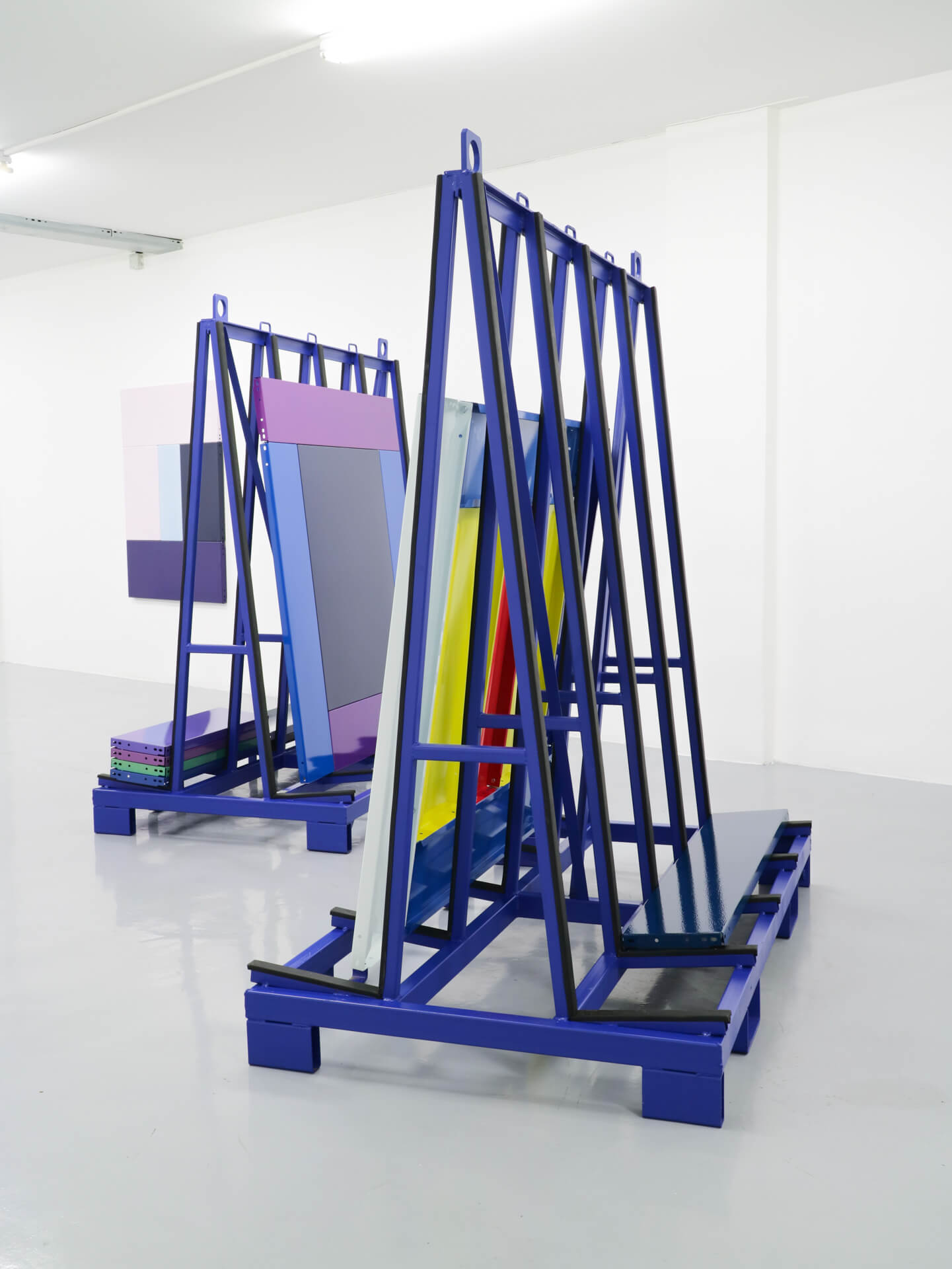


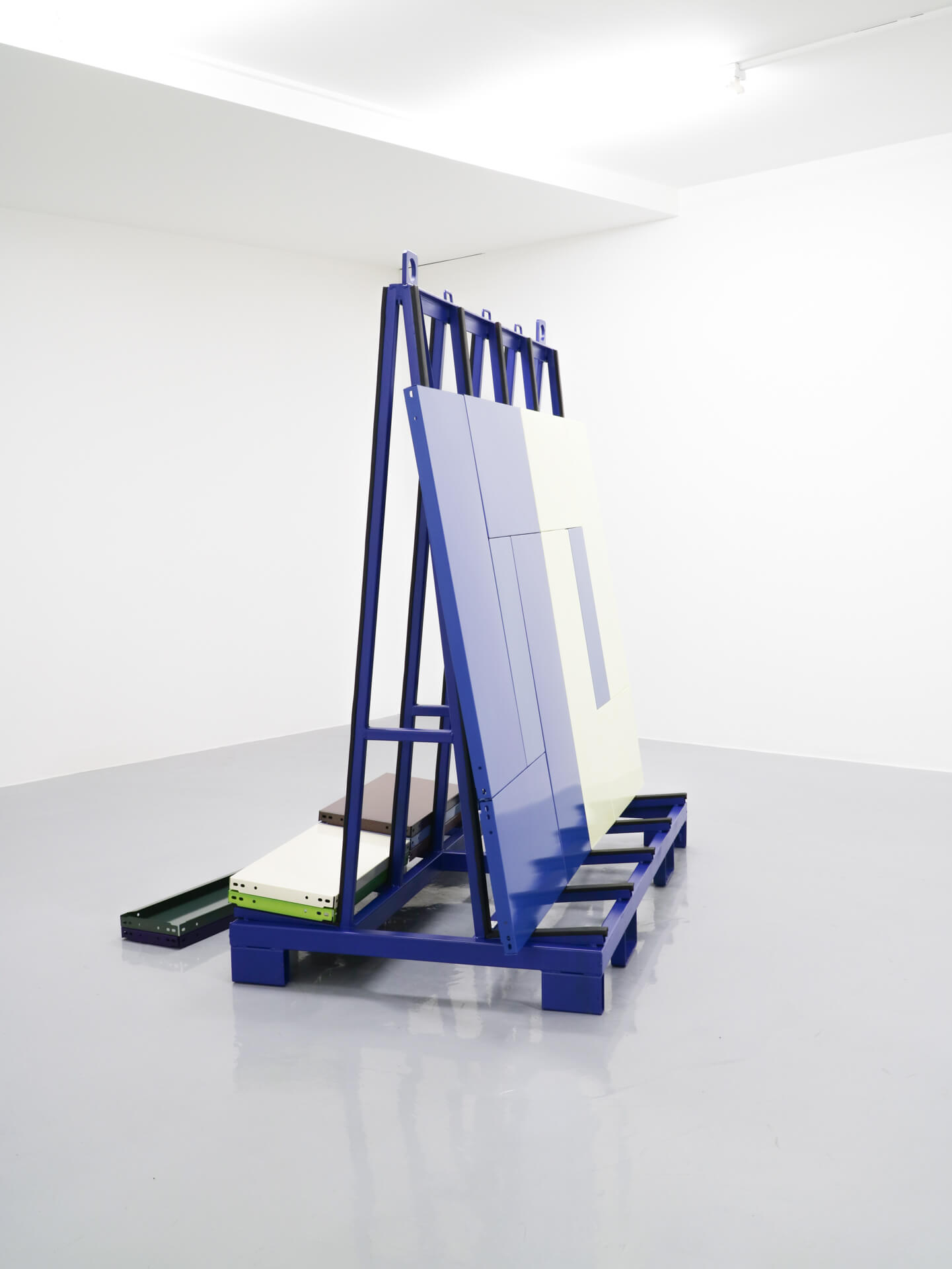
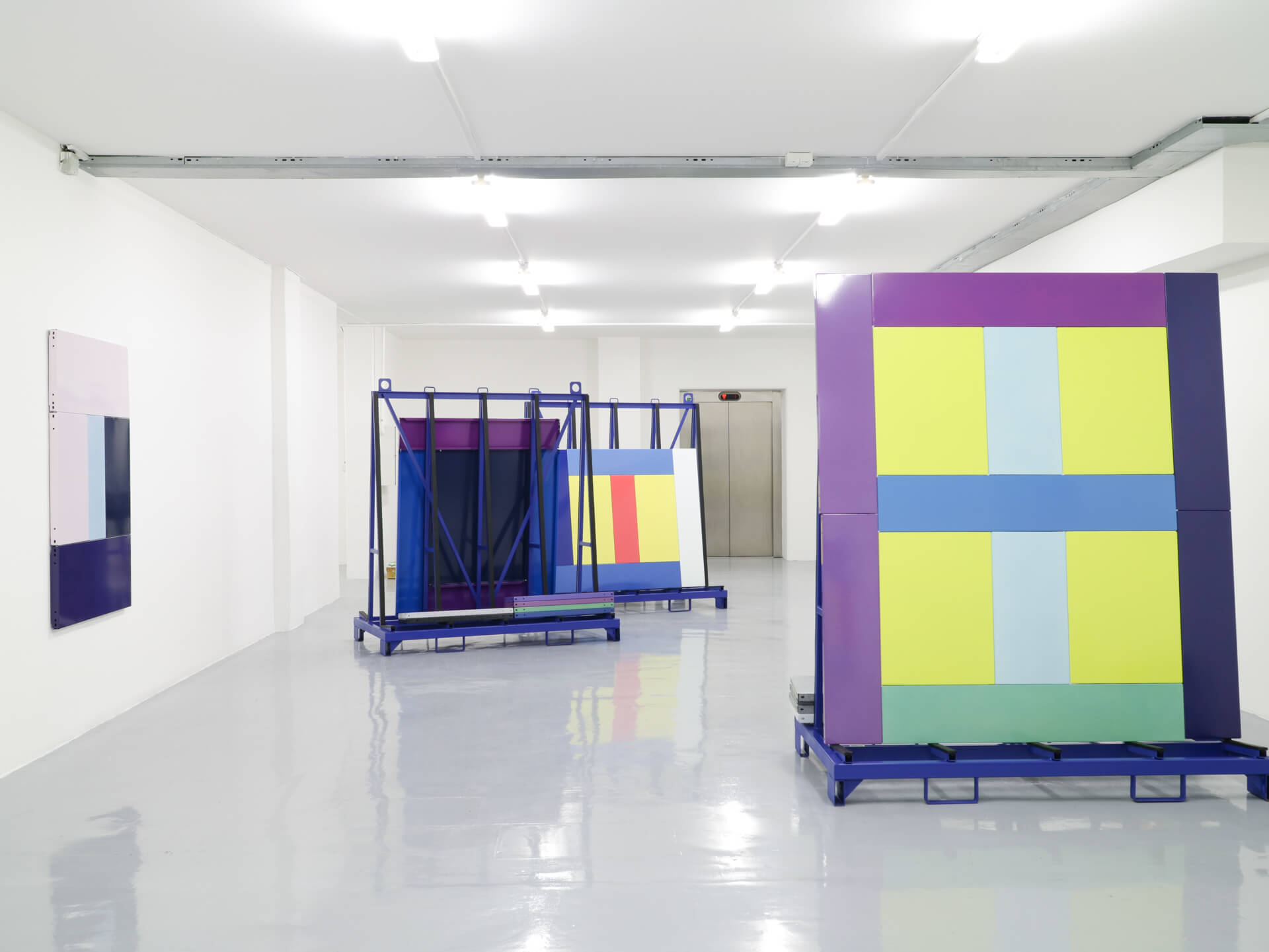




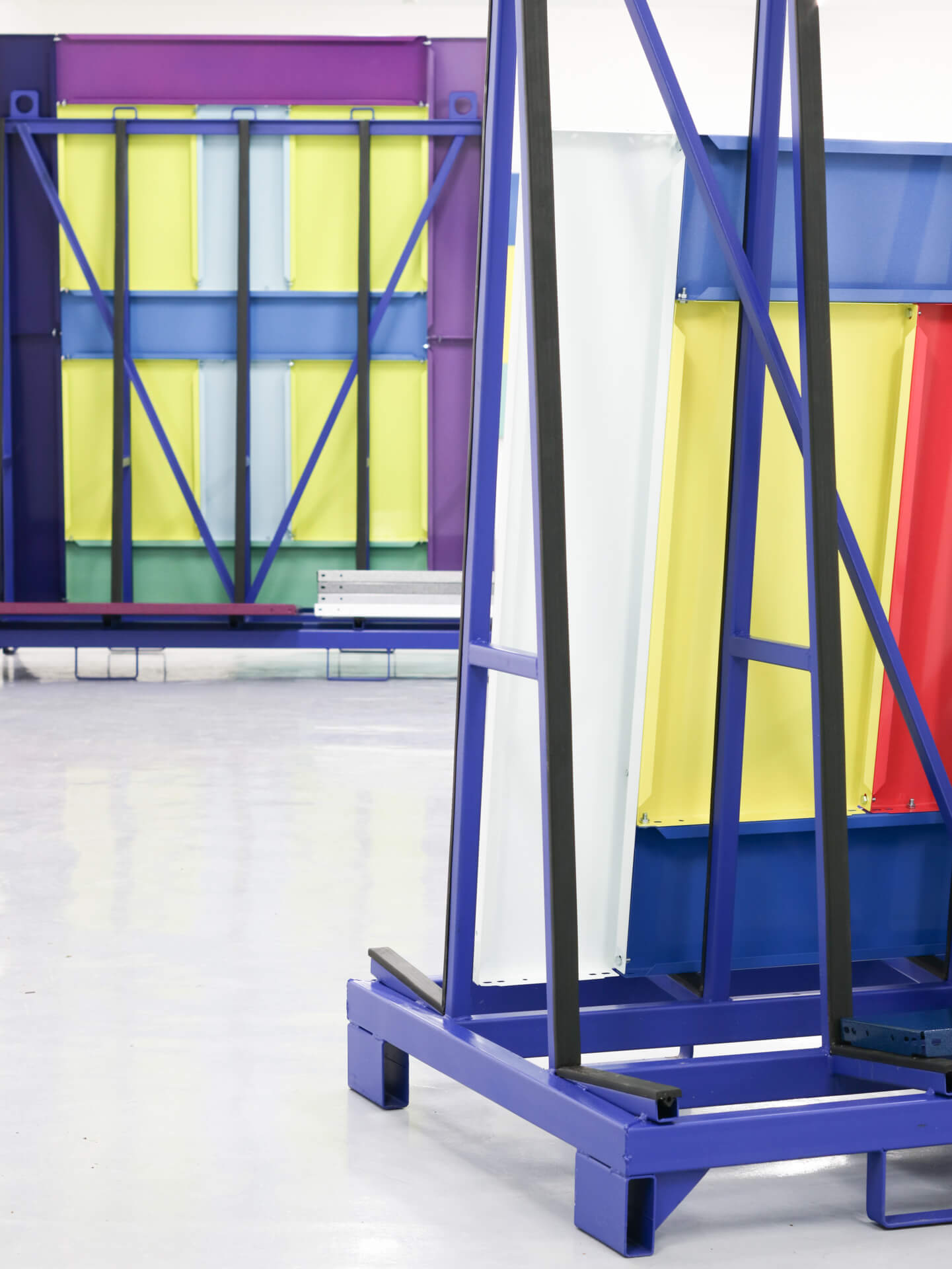
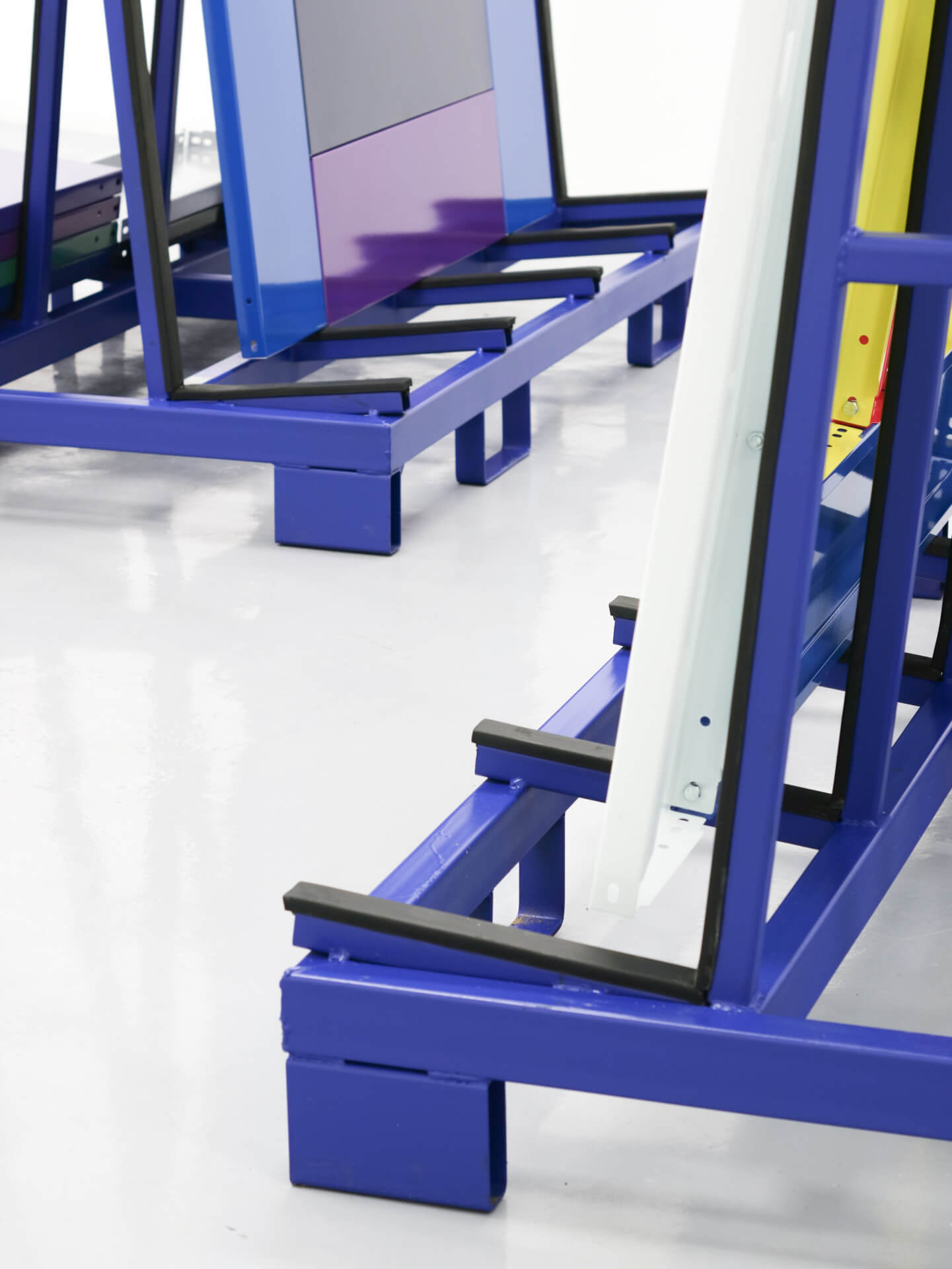
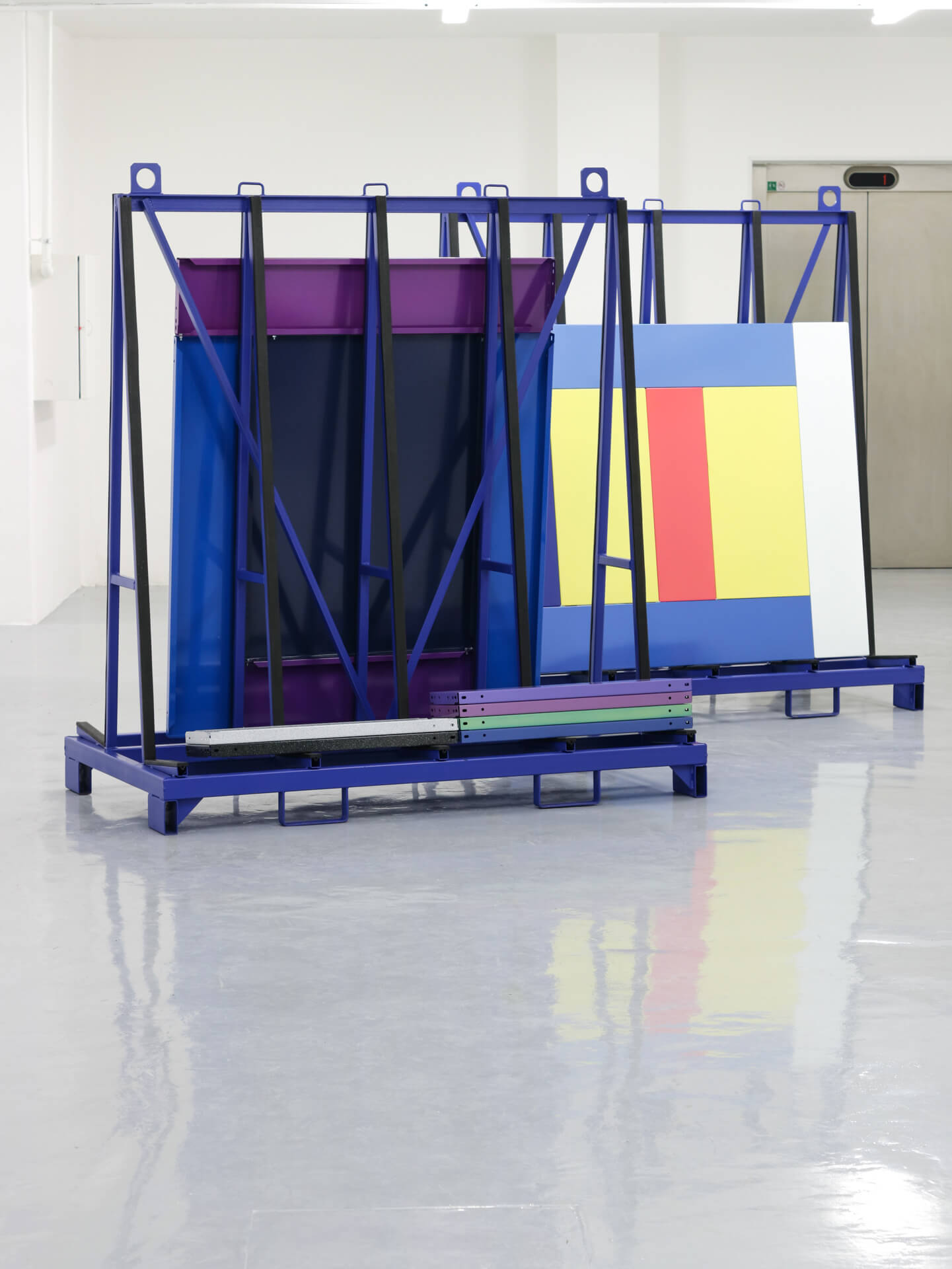
anthology of texts dedicated to design theory. This question is relevant not only for design
but also for abstract painting with its more than 100 years long history. On one hand it may
seem that everything has already been said on behalf of this subject, however on the other
hand the interest in this matter does not lose in intensity. ‘The Eternal Theme’ is being
refreshed over and over again; the words and images are being forgotten and lost to be able
to be rediscovered in new contexts. In a short introduction to the exhibition Dust on a Shelf I
am trying to suggest that the novelty of Kristóf Gábor compositions lies in its way of showing
abstraction as an aesthetical and political problem at the same time.
We can start with an interesting temporal proximity of two events. In 1927 the color shade
spectrum was standardized for the first time in Germany in order to be used in industrial
production, commonly known today under the abbreviation RAL. Three years later Theo van
Doesburg published his Manifesto of Concrete Art, where among the others he emphasized
the fact that a piece of art must be first created in the mind and only subsequently it can be
given shape, and he also stated that the painting technique must be ‘mechanical’ (it should
not bear any traces of impression, gestures, self-expression).
The color chart RAL, at the beginning consisting of 40 color shades (in its classical version it
has 213 color shades), meets the need of unification, reproducibility and effectiveness. All
these qualities seem not to have anything in common with what we usually expect from art
(uniqueness, unrepeatability, purposiveness without a purpose). However it is vital to realize
that this first sight is basically only a long time fading romantic conception of art and that the
above mentioned criteria of quality, taken from the world of industrial production, were
already used within the context of artworks by the representatives of the early avant-garde,
either constructivism or Bauhaus.
Gábor Kristóf has started to work with pigments corresponding to RAL color shades chart
several years ago. In the Polychrome monochromes series (2016) he concentrated on work
with material quantity of individual pigments. He started mixing his own blends and then he
applied them by the method of powder varnishing, which viewed from afar gave the
impression of compact color shade, however when viewed from a short distance they gave
away the impression of being ‘dirty’. Polychrome monochromes handled the problematics of
abstraction in both above mentioned senses. They thematized the abstract painting as a
category that is nowadays usually being worked with in a descriptive way, eventually in a
normative way (something looks like abstract art). At the same time they also embraced the
political and economic level of the problematics, thus the fact that the standardization of
color shades in the RAL color chart is conditioned by the logic of capitalistic abstraction. In
this case the abstraction enables the detachment of one aspect of the painting (color shade)
from the others that anchor the painting in concrete material reality.
In the series Dust on a Shelf (2019) the theme of abstraction is further developed as
something that relates to logic of capitalism as well as to formal problems of painting. In a
gallery we encounter paintings in several ‘states’. From semi-products (prefabricated
segments of shelf constructions with industrially applied author’s pigment blends), to
painting-objects installed on stands designed to transport glass panes and finally to classical
hanging paintings. Every composition was assembled directly in the gallery based on colorful
layouts that we watched on the computer screen during the assembling. By its way of
creation and installation the exhibition Dust on a Shelf refers more to late capitalism ways of
production, where the assembling of goods takes place in more and more automatized
assembly shops from parts transported from many more or less remote locations, then to
standardized (mass) industrial production that was a reference point of Polychrome
monochromes.
Things that we get surrounded by and that we use every day, do not often have a clearly
defined place of origin, however their trajectory is very concrete. At its beginning there is a
need or even better a desire, and at its end there is satisfaction. The brightest moment of a
product comes when we are checking it out on our shiny displays that had replaced the shop
windows. I think that this might suggest that we perceive the exhibition Dust on a Shelf in the
same way – as the brightest moment of things on their way from desire to oblivion.
JAN ZALEŠÁK / CURATOR OF THE EXHIBITION
DUST ON A SHELF by GÁBOR KRISTÓF
@ GALERIE KABINET T, ZLÍN, CZ
February 15 - March 21, 2019